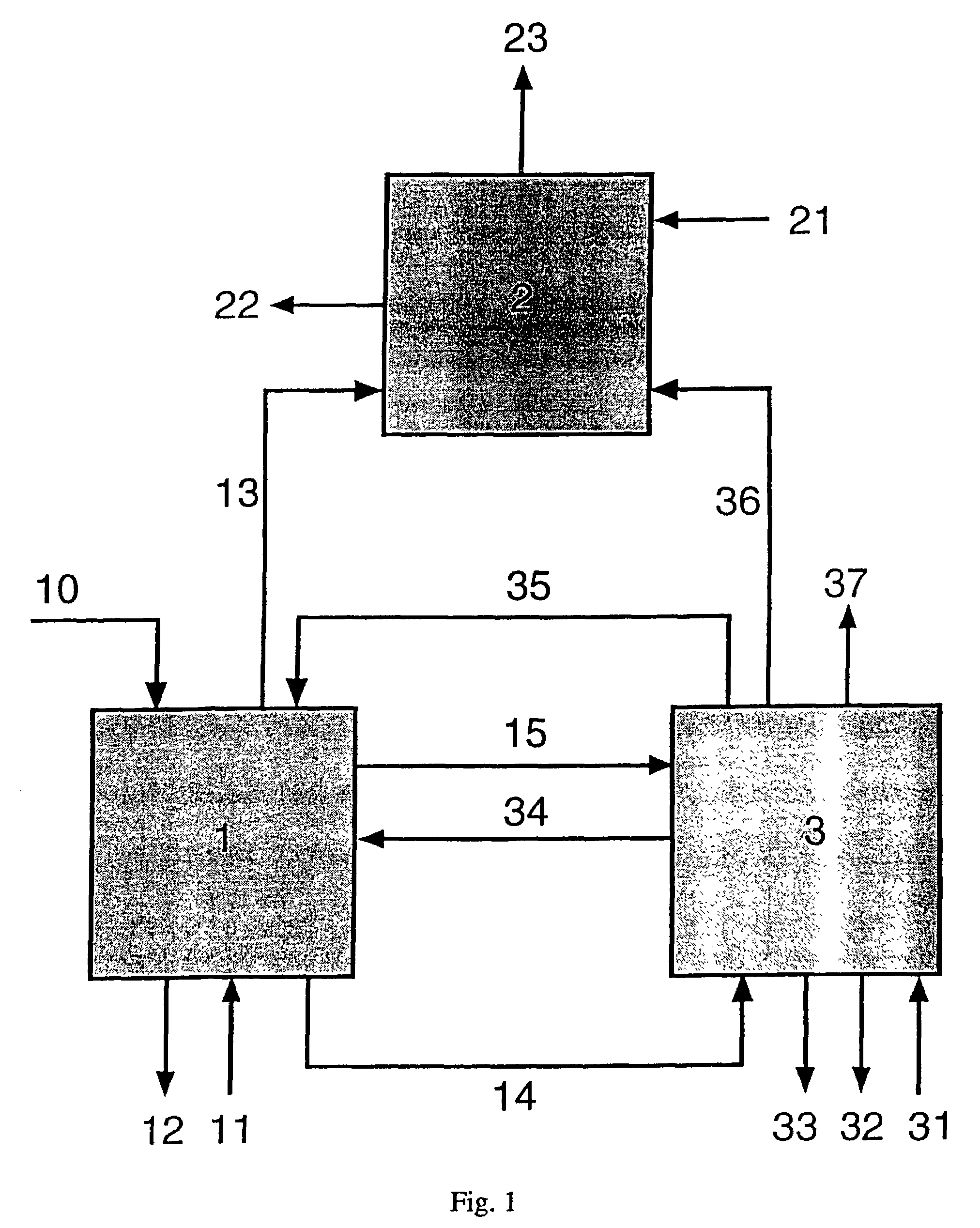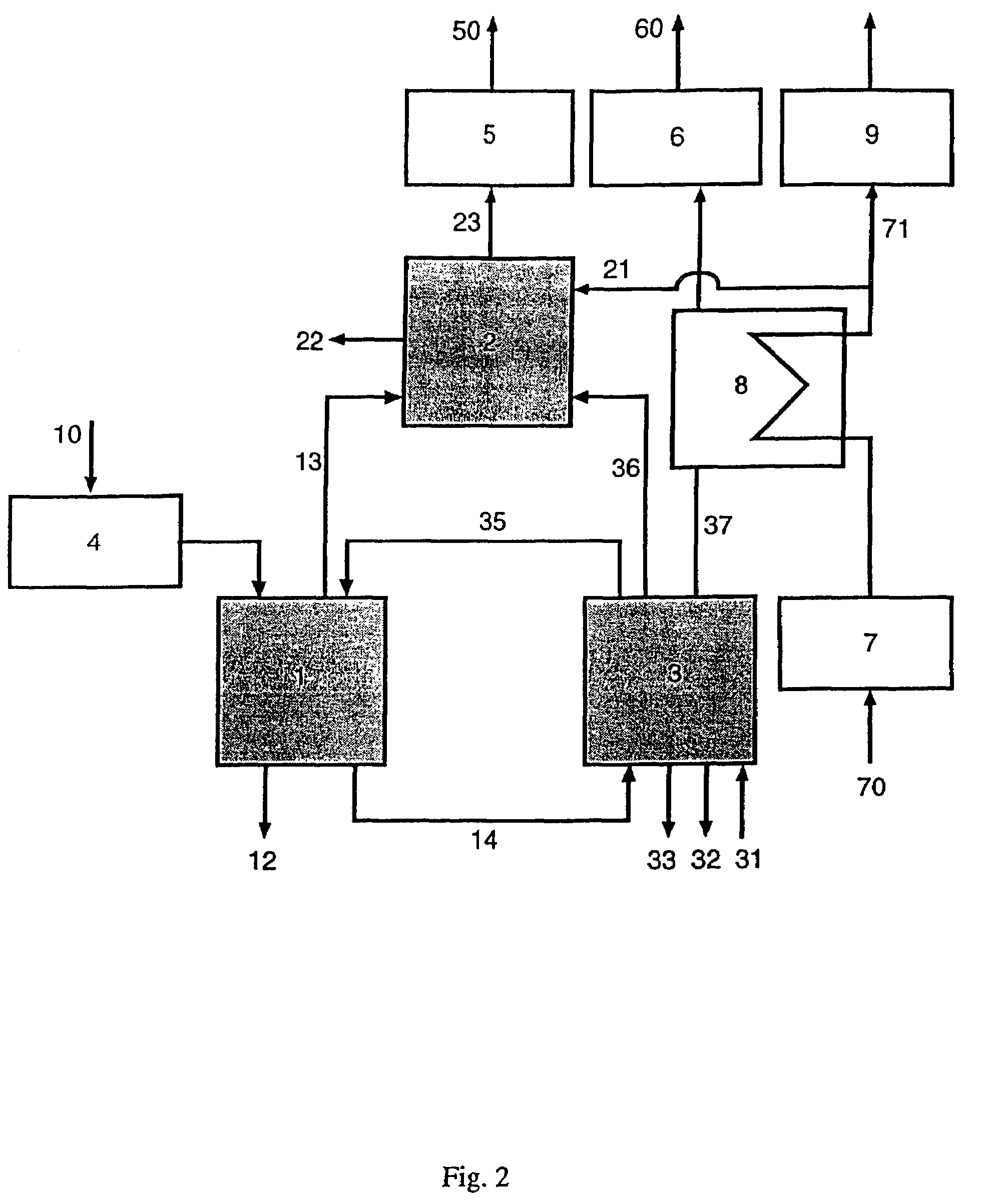Method and device for pyrolyzing and gasifying organic substances or substance mixtures
- Summary
- Abstract
- Description
- Claims
- Application Information
AI Technical Summary
Benefits of technology
Problems solved by technology
Method used
Image
Examples
embodiment
[0022]In the following example, the preferred design of the method of the invention and of the apparatus of the invention is described. The preferred method in accordance with FIG. 2 and the preferred apparatus in accordance with FIG. 3 serves for the pyrolysis and gasification of 900 kg of wood per hour. The wood used as an example substantially consists of 52.3 percent by weight of carbon, 5.9 percent by weight of hydrogen and 41.8 percent by weight of oxygen, in each case with respect to the fuel substance free of water and ash, and furthermore has an ash portion of 0.51 percent by weight with respect to the raw application material. The calorific value of the wood amounts to Hu=17.2 MJ / kg with respect to the state free of water; the thermal gasifier power thus amounts to 3.92 MW.
[0023]In the preferred embodiment described in FIG. 2 of the method for wood gasification, wood 10 is subjected to crushing and / or drying in a preparation stage 4 depending on the condition of the applic...
PUM
| Property | Measurement | Unit |
|---|---|---|
| Temperature | aaaaa | aaaaa |
| Temperature | aaaaa | aaaaa |
| Temperature | aaaaa | aaaaa |
Abstract
Description
Claims
Application Information
 Login to View More
Login to View More - R&D
- Intellectual Property
- Life Sciences
- Materials
- Tech Scout
- Unparalleled Data Quality
- Higher Quality Content
- 60% Fewer Hallucinations
Browse by: Latest US Patents, China's latest patents, Technical Efficacy Thesaurus, Application Domain, Technology Topic, Popular Technical Reports.
© 2025 PatSnap. All rights reserved.Legal|Privacy policy|Modern Slavery Act Transparency Statement|Sitemap|About US| Contact US: help@patsnap.com



